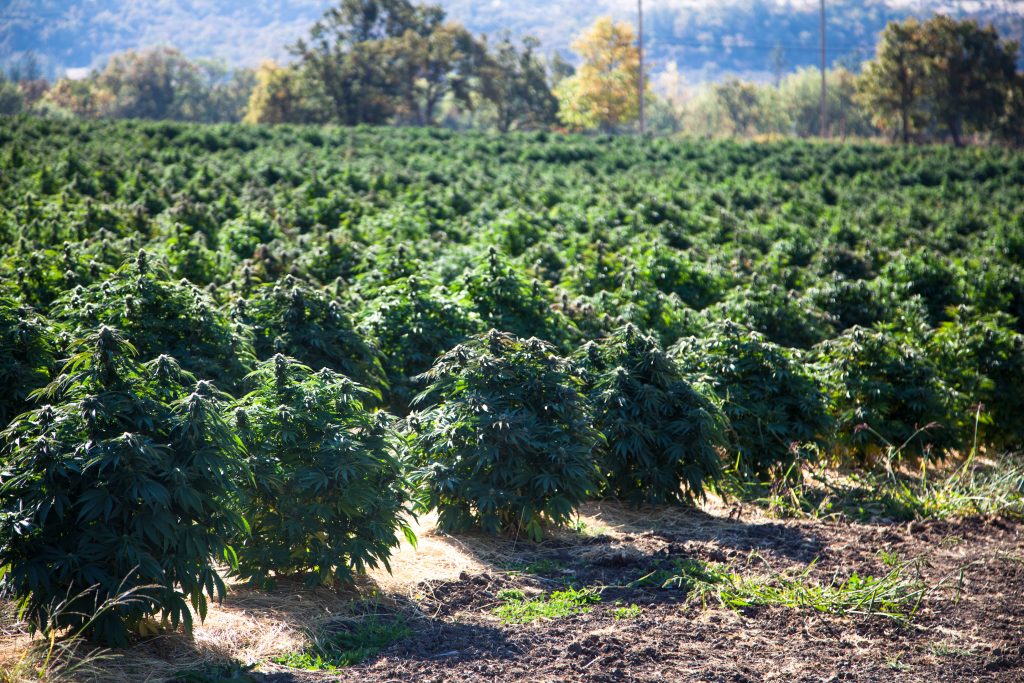
A misconception between hemp and marijuana has Adam Rabinowitz concerned about how consumers view an up-and-coming agricultural commodity in the Southeast.

Rabinowitz worked as an Extension economist at the University of Georgia before he moved to Alabama this summer to become an Auburn University Assistant Professor and Extension economist. At UGA, Rabinowitz helped conduct a survey to gauge consumer knowledge of hemp. The results were staggering.
“I feel like there really hasn’t been any education to really make that distinction. Hemp has gotten that stigma of being the same as marijuana because we haven’t had the production. We haven’t had the products that really have taken hold in our society. It’s resulted in a lack of knowledge of what the crop really is,” Rabinowitz said.
Hemp Production Across the Southeast
However, farmers in Alabama, Florida and Georgia farmers understand the significance of the hemp crop.
The USDA approved Florida’s state hemp program in April, which paved the way for growers to cultivate hemp this year. According to the University of Florida/IFAS, the UF/IFAS Industrial Hemp Pilot Project is under way across the state at three production locations in Quincy, Hague and Homestead to examine variety selection, cropping system development, production economics and invasion risk assessment.
According to Mike Evans, director of plant industries who oversees the hemp program at the Georgia Department of Agriculture, they received 166 applications from farmers who were interested in producing hemp this year.
Hemp production in Alabama is in its second year. Katelyn Kesheimer, Auburn Assistant Professor & Extension Specialist in Entomology and Plant Pathology, there were 150 licensed growers with 10,000 acres approved last year. This year there are close to 500 official licensed growers throughout the state.
What Distinguishes Hemp From Marijuana?
What distinguishes hemp from marijuana is the amount of THC or tetrahydrocannabinol present in the plant. It is the main compound in cannabis that produces the “high” sensation. Legal hemp must contain no more than 0.3 percent of THC. Otherwise, the THC is at an unacceptable level. When hemp contains more than 0.3 percent THC, the crop must be destroyed. THC levels must be tested within 15 days of anticipated harvest.
According to healthline.com, marijuana refers to cannabis that has more than 0.3 percent THC by dry weight.
Rabinowitz believes initially, the hemp awareness and education he’s trying to spread will not necessarily lead to more acreage in the future. In fact, he doesn’t expect hemp acres to increase in 2021.
“The hope is that it leads to better informed consumers about what is actually happening. I think what’s going to really drive the acres discussion is the market for the product. If we talk about like fiber products and some of the other uses, the price of hemp to be produced for those products is very, very low,” Rabinowitz said. “It was really the CBD market that got the attention of some farmers but a lot of folks that are not even in agriculture to think about, ‘Hey, is it possible I could make tens of thousands of dollars per acre on this crop?
“I think now we’re starting to get more towards the core of these are the farmers that are going to be engaged in the actual production. But we still need to see what the consumer side looks like.”
Rabinowitz also said he is part of a recently funded USDA grant that will look at the marketing aspect for hemp-based products which will continue to focus on the consumer side.









